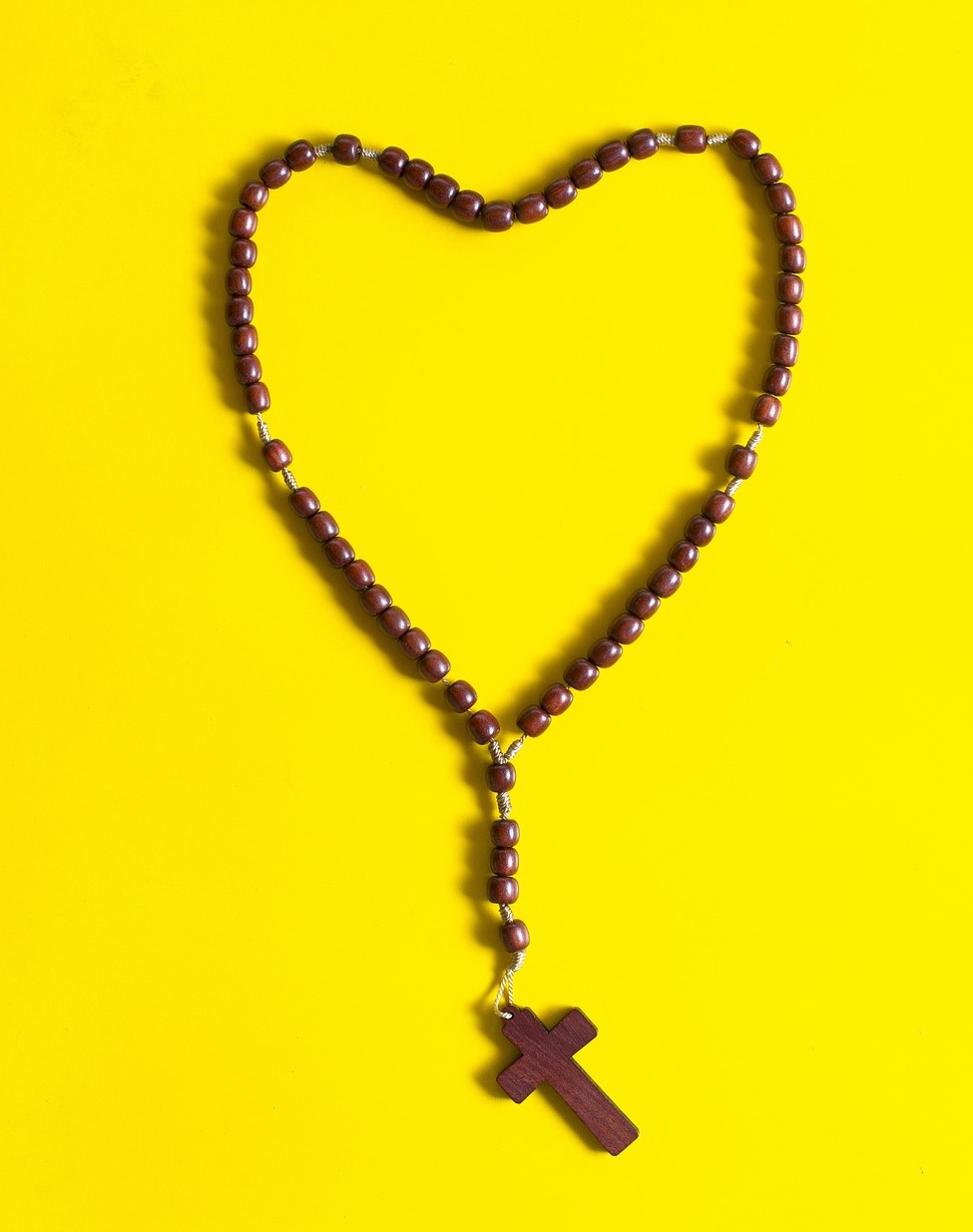The Rosary
The rosary is a prayer form that combines repetitive recitation with meditative reflection, inviting believers to engage in a profound spiritual journey.
Origins of the Rosary
The rosary can be traced back to the early centuries of Christianity, although the exact details are hard to pin down. It is often said to have evolved from monks’ practice of reciting 150 psalms. Some evidence exists that in the Middle Ages monks used strings of beads to keep count of the psalms, and later similar strings to count Our Fathers and Hail Marys. These strings of beads became known as "Paternosters," Latin for "Our Father."
The structure was refined in the 12th-15th centuries, eventually taking the form of 50 Hail Marys linked to verses of psalms that evoked the lives of Jesus and Mary. This devotion became known as the rosarium ("rose garden"), which was a common term at the time for a collection of stories or materials on a given theme.
Tradition says that the rosary as we know it today took shape in the 13th century, inspired by a vision Saint Dominic had of the Blessed Virgin Mary. However, this is difficult to verify, as early accounts of his life do not seem to mention the rosary, and portraits painted during and close to his lifetime do not include a rosary as an identifying symbol.
How to Pray the Rosary

The rosary consists of a crucifix, a centerpiece (often with an image of Jesus, Mary, or another saint), and a series of beads arranged in five decades. Each decade comprises ten small beads, usually separated by a larger bead. The pattern of beads is meant to help users track their prayers so they don’t lose count.
It is prayed as followed:
- Begin with the Sign of the Cross.
- At the crucifix, pray the Apostles’ Creed.
- At the next bead, pray the Our Father.
- Pray one Hail Mary on each of the following three beads.
- Pray the Glory Be (no specific bead).
- The next bead begins the first mystery and first decade. Pray one Our Father.
- Pray one Hail Mary on each of the following ten beads.
- Pray the Glory Be and the Fatima Prayer. This completes the first decade of the rosary.
- Follow the same pattern for the following four decades (one Our Father, ten Hail Marys, Glory Be, Fatima Prayer).
- At the end, on the centerpiece, pray the Hail, Holy Queen.
- End with the Sign of the Cross.
While reciting these prayers, devotees are encouraged to meditate upon particular moments of Jesus’ and Mary’s lives, referred to as “Mysteries.”
There are four separate sets of mysteries, each one with five individual mysteries (one per decade). Traditionally, at the start of each decade the mystery is announced. Sometimes a brief scripture passage or reflection is read to aid the faithful in their reflection on the theme.
The mysteries are:
The Joyful Mysteries (traditionally used on Mondays and Saturdays)
- The Annunciation of the Lord to Mary
- Mary is chosen to be the mother of Jesus.
- The Visitation of Mary to Elizabeth
- Elizabeth recognizes Mary as the mother of our Lord.
- The Nativity of our Lord Jesus Christ
- Jesus is born and laid in a manger.
- The Presentation of our Lord
- Jesus is presented in the Temple of Jerusalem.
- Finding Jesus in the Temple at Age 12
- Jesus is found discussing God's laws in the temple.
The Sorrowful Mysteries (traditionally used on Tuesdays and Fridays)
- The Agony of Jesus in the Garden
- Jesus prays when confronted with the sins of the world.
- The Scourging at the Pillar
- Jesus is whipped before His execution.
- Jesus is Crowned with Thorns
- Jesus is mocked with a painful crown of thorns.
- Jesus Carried the Cross
- Jesus carries the weight of our sins to His crucifixion.
- The Crucifixion of Our Lord
- Jesus Christ dies to save all mankind.
The Glorious Mysteries (Traditionally used on Wednesdays and Sundays)
- The Resurrection of Jesus Christ
- Jesus rises triumphant over death.
- The Ascension of Jesus to Heaven
- As Jesus ascends, He gives us a special task.
- The Descent of the Holy Spirit
- At Pentecost the Church is born.
- The Assumption of Mary into Heaven
- The Virgin Mary is gloriously assumed into heaven.
- Mary is Crowned as Queen of Heaven and Earth
- Mary is honored above all creatures.
The Luminous Mysteries (Traditionally used on Thursdays)
- The Baptism of Jesus in the Jordan
- God proclaims Jesus is His Son.
- The Wedding at Cana
- Jesus performs a surprising miracle at a wedding.
- The Proclamation of the Kingdom
- Jesus calls us to do something important.
- The Transfiguration of Jesus
- Jesus is gloriously transformed.
- The Institution of the Eucharist
- Jesus shares His body and blood for our salvation.
Updated 2023-06-23